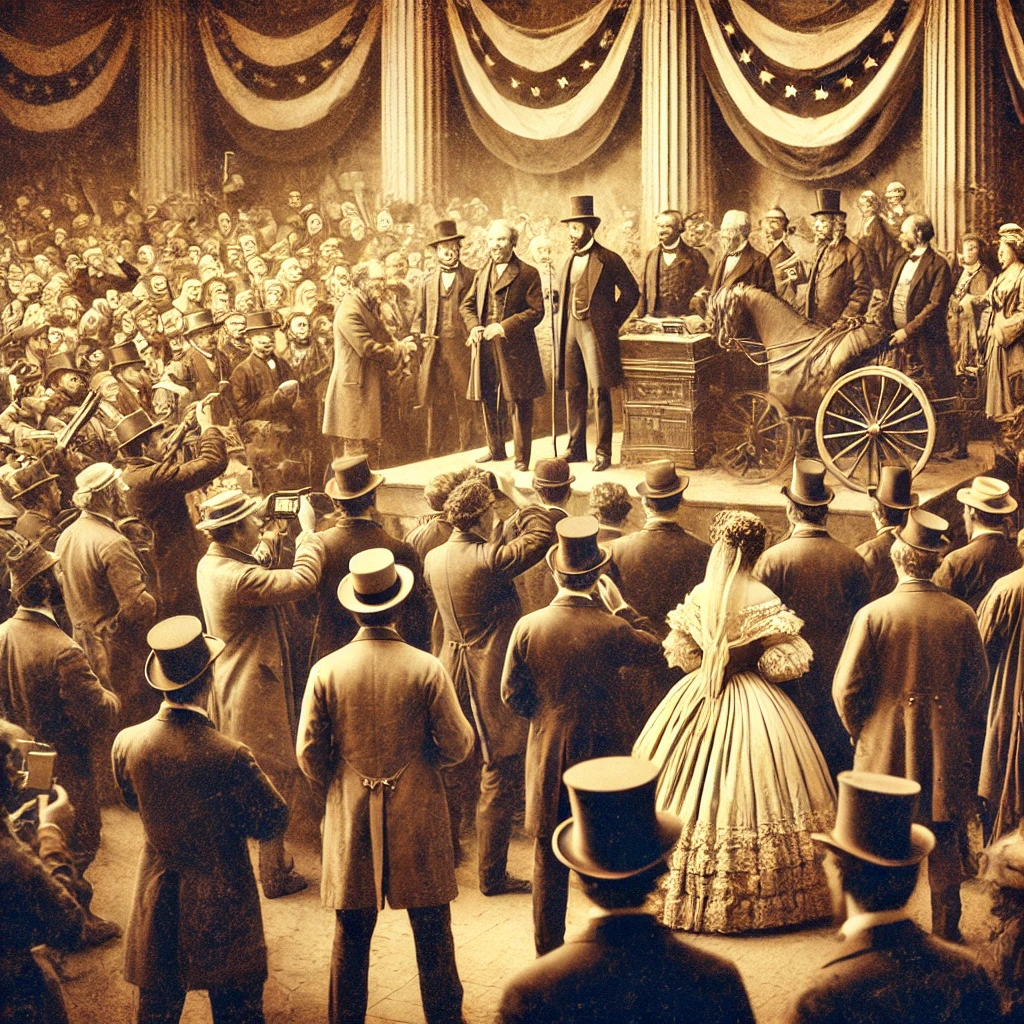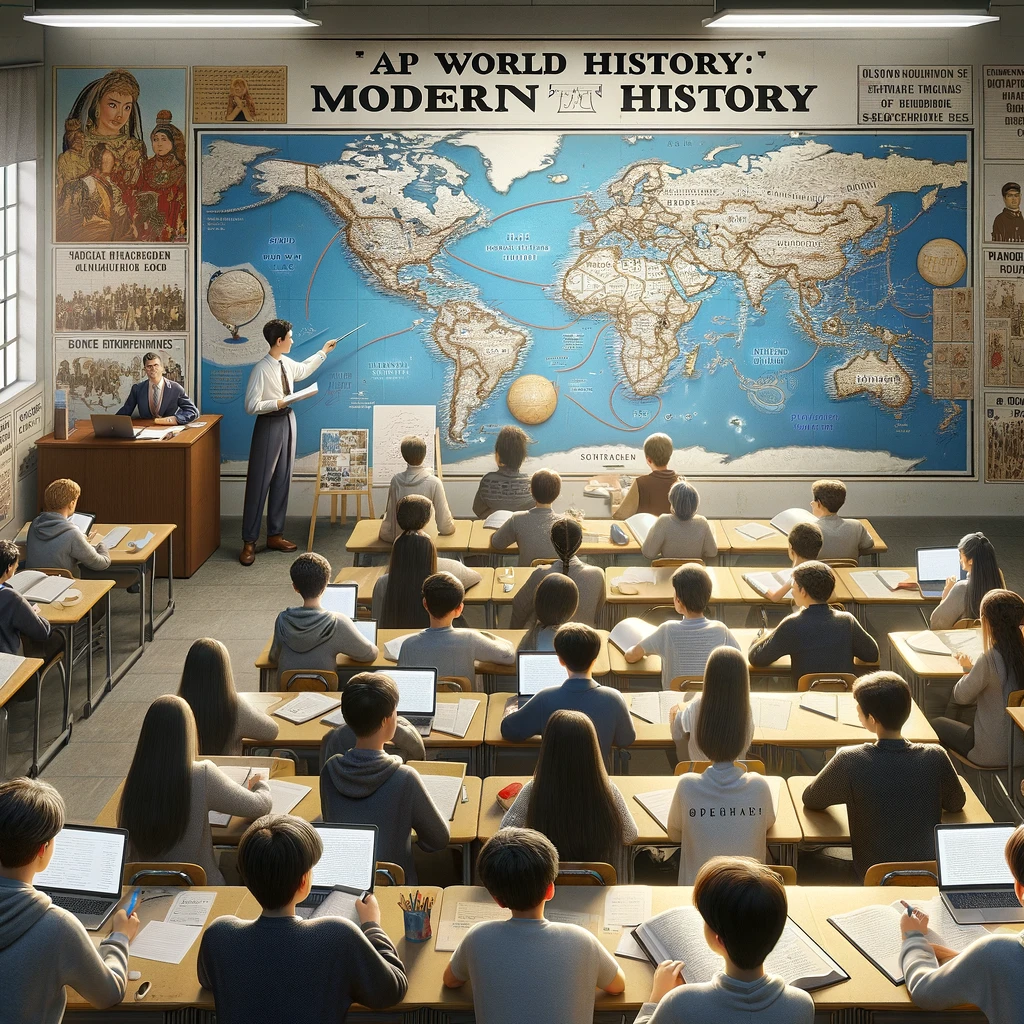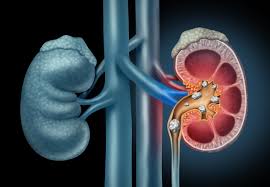AP World History
AP World History: Modern! In this captivating course, we’ll explore the cultural, economic, political, and social developments that have shaped our world from approximately 1200 CE to the present day. Let’s dive into the details:
Course Overview
AP World History: Modern takes you on a global adventure, unraveling the threads that connect civilizations across continents and centuries. From empires to revolutions, trade networks to technological breakthroughs, this course offers a panoramic view of human history.
Skills Development
In AP World History: Modern, you’ll hone essential skills, including:
- Source Evaluation: Assessing the reliability and significance of primary and secondary sources.
- Analytical Reasoning: Uncovering claims, evidence, and reasoning within historical texts.
- Contextualization: Placing events within their broader historical context.
- Argumentation: Crafting and defending historical arguments through writing.
Equivalency and Prerequisites
- College Course Equivalent: Comparable to an introductory college course in modern world history.
- Recommended Prerequisites: None – this course welcomes all curious minds interested in exploring the past.
Exam Information
- Exam Date: Wednesday, May 15, 2024, at 8 AM Local Time.
- This is the scheduled date for the AP World History: Modern Exam.
Course Units
The AP World History: Modern curriculum unfolds across nine thematic units:
Unit 1: The Global Tapestry
- Focus: States, cultures, and religions from 1200 to 1450 CE.
- Exam Weight: 8%–10%.
Unit 2: Networks of Exchange
- Focus: Trade routes, cross-cultural interactions, and global connections.
- Exam Weight: 8%–10%.
Unit 3: Land-Based Empires
- Focus: Empires, rulers, and religious developments from 1450 to 1750.
- Exam Weight: 12%–15%.
Unit 4: Transoceanic Interconnections
- Focus: Exploration, maritime empires, and cross-cultural encounters.
- Exam Weight: 12%–15%.
Unit 5: Revolutions
- Focus: Enlightenment, revolutions, and industrial transformations.
- Exam Weight: 12%–15%.
Unit 6: Consequences of Industrialization
- Focus: State expansion, imperialism, and migration patterns.
- Exam Weight: 12%–15%.
Unit 7: Global Conflict
- Focus: World Wars, mass atrocities, and shifts in the global order.
- Exam Weight: 8%–10%.
Unit 8: Cold War and Decolonization
- Focus: Ideological struggles, independence movements, and the end of colonial rule.
- Exam Weight: 8%–10%.
Unit 9: Globalization
- Focus: Technology, environment, and the interconnected world.
- Exam Weight: 8%–10%.
Course Structure:
The course content is organized into nine units, each focusing on significant historical periods and themes:
The Global Tapestry (c. 1200–c. 1450):
- Study the formation, expansion, and decline of states across continents, and understand various religious and cultural developments.
Networks of Exchange (c. 1200–c. 1450):
- Explore how trade routes like the Silk Roads and the Indian Ocean network facilitated cultural, economic, and environmental exchanges.
Land-Based Empires (c. 1450–c. 1750):
- Analyze the rise and governance of empires like the Ottoman, Mughal, and Safavid, and their cultural and religious impacts.
Transoceanic Interconnections (c. 1450–c. 1750):
- Learn about the effects of maritime exploration and the expansion of European maritime empires.
Revolutions (c. 1750–c. 1900):
- Examine the Enlightenment, various national revolutions, and the transformative Industrial Revolution.
Consequences of Industrialization (c. 1750–c. 1900):
- Investigate the global impact of industrialization, including imperialism, economic changes, and migration patterns.
Global Conflict (c. 1900–present):
- Study the causes and consequences of global conflicts, including both World Wars.
Cold War and Decolonization (c. 1900–present):
- Explore the Cold War dynamics and the decolonization movements across Asia and Africa.
Globalization (c. 1900–present):
- Understand the drivers and effects of modern globalization, including technological advances and economic transformations.
Embark on the Journey
Get ready to explore the past, connect the dots, and discover the shared threads that weave our world together. Bon voyage!

Why Take AP World History: Modern?
Taking AP World History: Modern can be incredibly enriching for several reasons:
Global Perspective:
- Gain a comprehensive understanding of the forces that have shaped our modern world, from 1200 CE to the present.
Critical Thinking:
- Develop the ability to analyze historical documents, make connections between different periods, and construct well-supported arguments.
College Preparation:
- The course prepares you for college-level coursework and can potentially earn you college credit, saving time and tuition costs.
Historical Awareness:
- Become more informed about the past, which can help you understand current global issues and events.
Skill Development:
- Enhance skills such as writing, research, and analysis, which are valuable across various academic disciplines and careers.
Cultural Sensitivity:
- Learn about diverse cultures and societies, fostering a greater appreciation for global diversity.
Interdisciplinary Connections:
- Connect historical events to developments in art, science, politics, and economics.
Engagement with Primary Sources:
- Work directly with primary sources, a skill that is highly valued in higher education and many professions.
No Prerequisites:
- The course is accessible to all students, regardless of their previous history coursework.
AP Exam and College Admissions:
- Performing well on the AP exam can enhance your college application profile, demonstrating your commitment to academic excellence.
By taking AP World History: Modern, you’re not just learning about historical events; you’re gaining a toolkit for understanding the complexities of our interconnected world.
What are the key topics covered in AP World History: Modern?
AP World History: Modern, you’ll explore a wide range of historical topics from approximately 1200 CE to the present. Here are the key units and concepts covered in the course:
The Global Tapestry:
- Examines how states formed, expanded, and declined across regions such as Africa, Afro-Eurasia, East Asia, Europe, South and Southeast Asia, and the Americas.
- Includes exploration of global and regional religions and belief systems.
Networks of Exchange:
- Focuses on trade routes, cross-cultural interactions, and connections between different parts of the world.
- Topics include the Silk Roads, the Mongol Empire, and trans-Saharan trade routes.
Land-Based Empires:
- Explores empires that held power over large contiguous areas of land.
- Covers the development of the Manchu, Mughal, Ottoman, and Safavid empires, religious developments, and how rulers maintained power.
Transoceanic Interconnections:
- Investigates advances in ocean exploration, maritime empires, and cross-cultural encounters.
- Topics include the Columbian Exchange, scientific learning, and challenges faced by empires.
Revolutions:
- Examines Enlightenment ideas, revolutions against existing governments, and the Industrial Revolution.
- Includes debates about trade policies and the experience of industrial economies.
Consequences of Industrialization:
- Studies state expansion, imperialism, and changes in social hierarchies.
- Explores the impact of industrialization on migration patterns and economic systems.
Global Conflict:
- Focuses on global conflicts, including World War I, mass atrocities, and shifts in the global political order.
Cold War and Decolonization:
- Analyzes ideological struggles, independence movements, and the end of colonial rule.
- Includes the effects of the Cold War and the creation of new states.
Globalization:
- Investigates technological advancements, economic changes, and challenges of the 21st century.
- Examines how globalization has transformed culture and international institutions.
These themes provide a comprehensive understanding of world history, allowing you to make connections and craft historical arguments.












